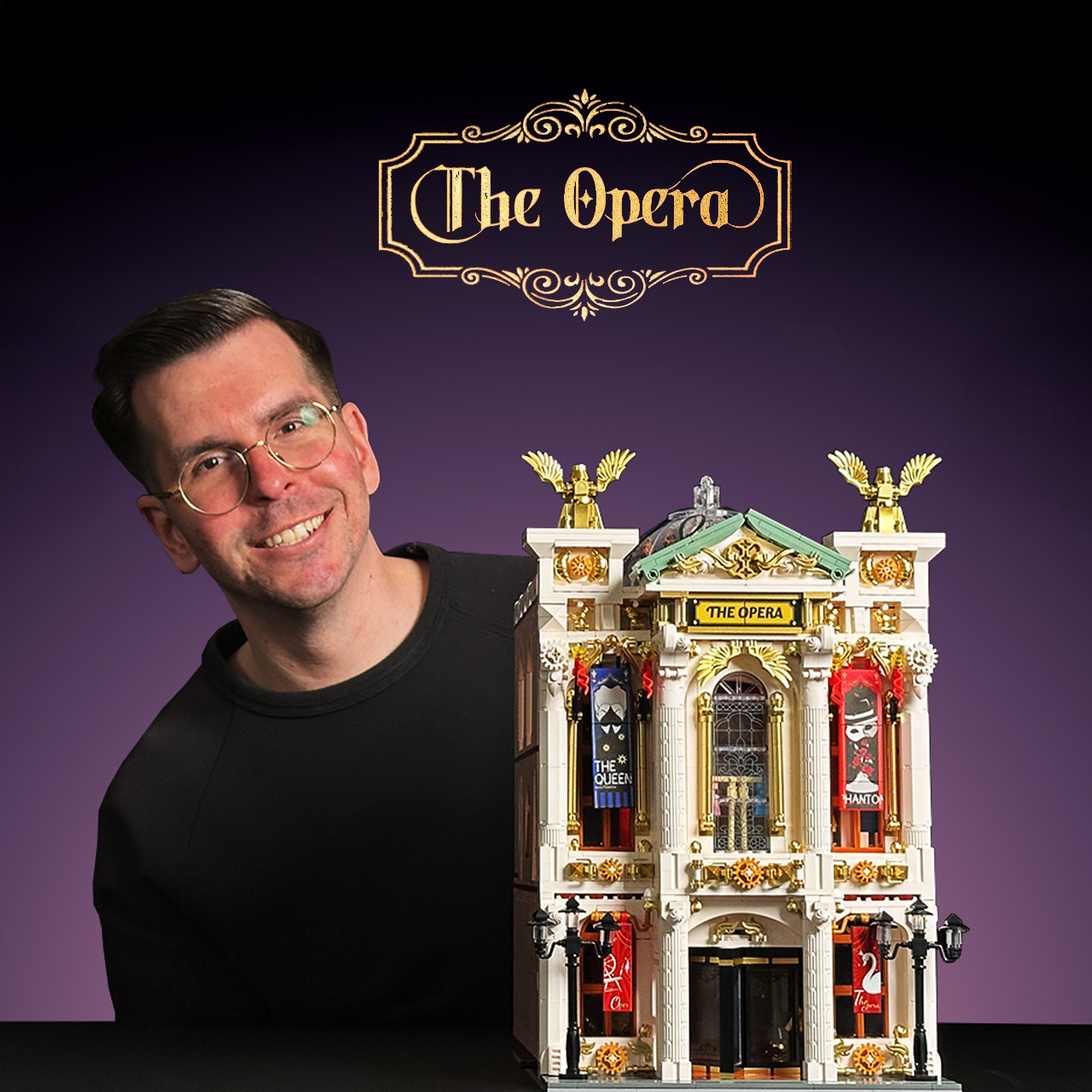Today brings something a little different than the usual LEGO content—a deep dive into Pantasy’s latest modular building set, The Opera. With over 3,500 pieces, this intricately designed model was my first non-LEGO build in a long time, and it certainly made a bold impression straight out of the box. With its ornate façade, detailed interiors, and theatrical flair, The Opera aims to capture the grandeur of classical performance halls. Let’s take a closer look at what this unique set has to offer.
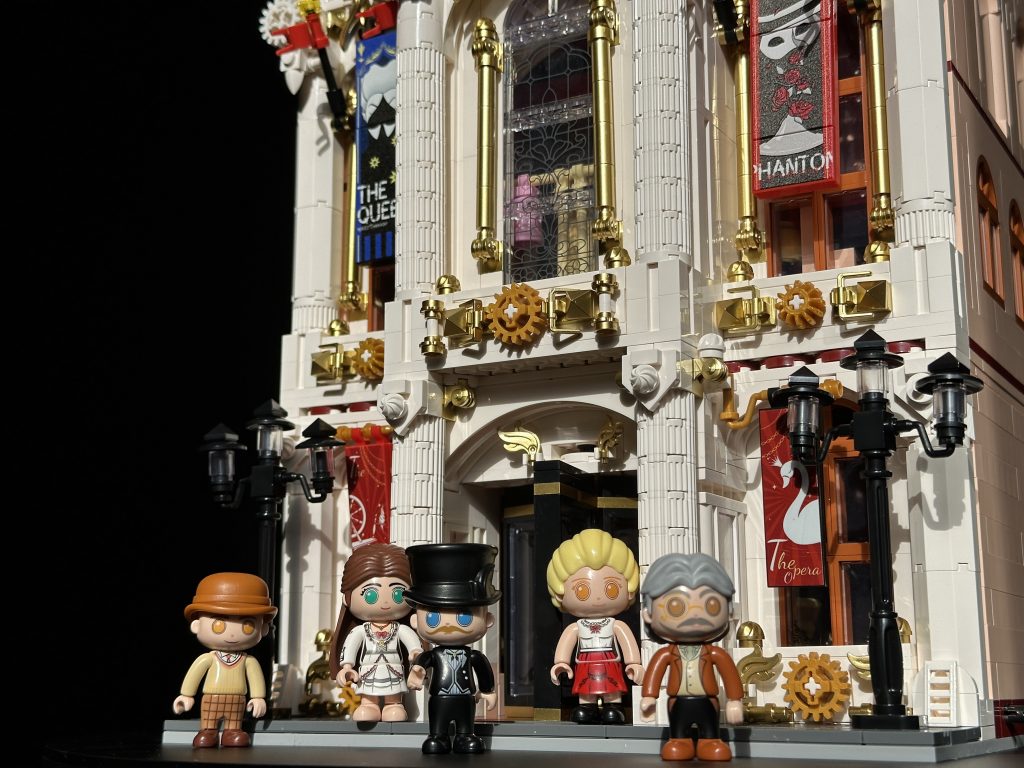
The set includes five minifigures—three male and two female characters. Each figure comes with both standing and seated legs, offering flexibility in posing, and the torso prints are nicely detailed, with some even featuring leg printing. While the overall design of the minifigures is strong, the facial expressions—particularly the eyes—have a stylized look that may not appeal to everyone.
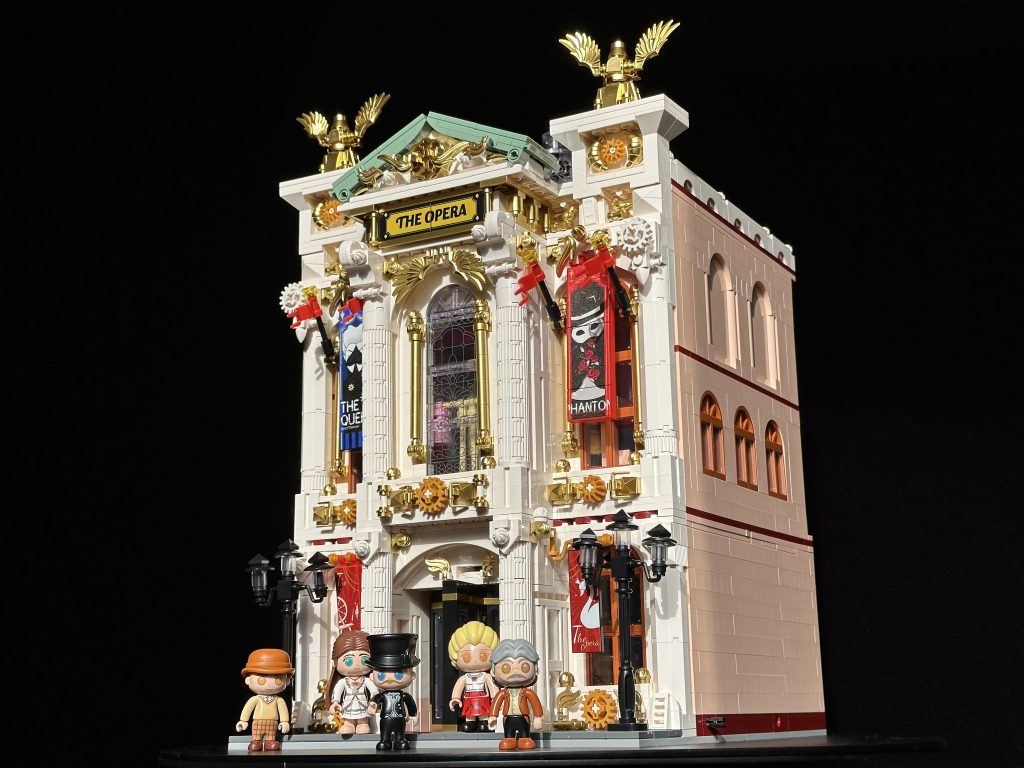
From the outside, The Opera is nothing short of impressive. At street level, two lampposts frame the tiled sidewalk, though there are no studs for minifigure placement. The façade draws clear inspiration from Baroque architecture, with white and gold elements dominating the design. A touch of mint green adorns the roof above the central projection, and even the Technic pins used here match the color scheme, showing a surprising level of attention to detail.
The roof section features some of the more advanced construction in the build, though nothing overly complex. The exterior includes several printed poster tiles—some matte, some glossy—advertising shows at the opera. The glossy ones catch the light nicely, but the matte tiles seem more prone to scratching. The absence of stickers in the entire set is a standout feature. A large printed “Opera” sign sits prominently above the central window, flanked by decorative gold birds, croissants, and what appear to be small cherubs.
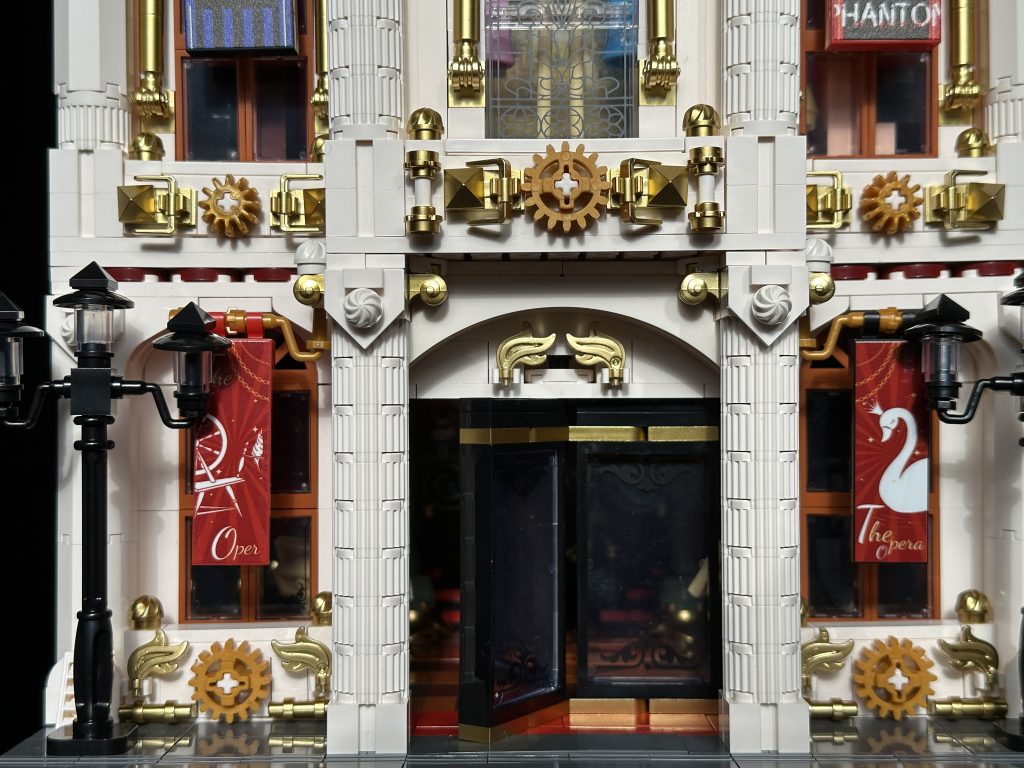
The front entrance features a revolving door and a red carpet tile, while the remaining three sides of the building are simpler but still well thought-out. Several windows—some hidden—are scattered across these sides, preserving a sense of symmetry often seen in classical buildings. The set includes modular connection points to integrate with other Pantasy buildings. An unexpected inclusion was a folded replacement for Step 18 found inside one of the build bags, along with a few extra bricks. It was a minor quirk that briefly caused some confusion but didn’t affect the overall experience.
The interior of The Opera is designed for accessibility. The roof and upper floors can be removed like a standard modular building, and the back opens up dollhouse-style. A side wall also swings open to reveal the dressing room area.
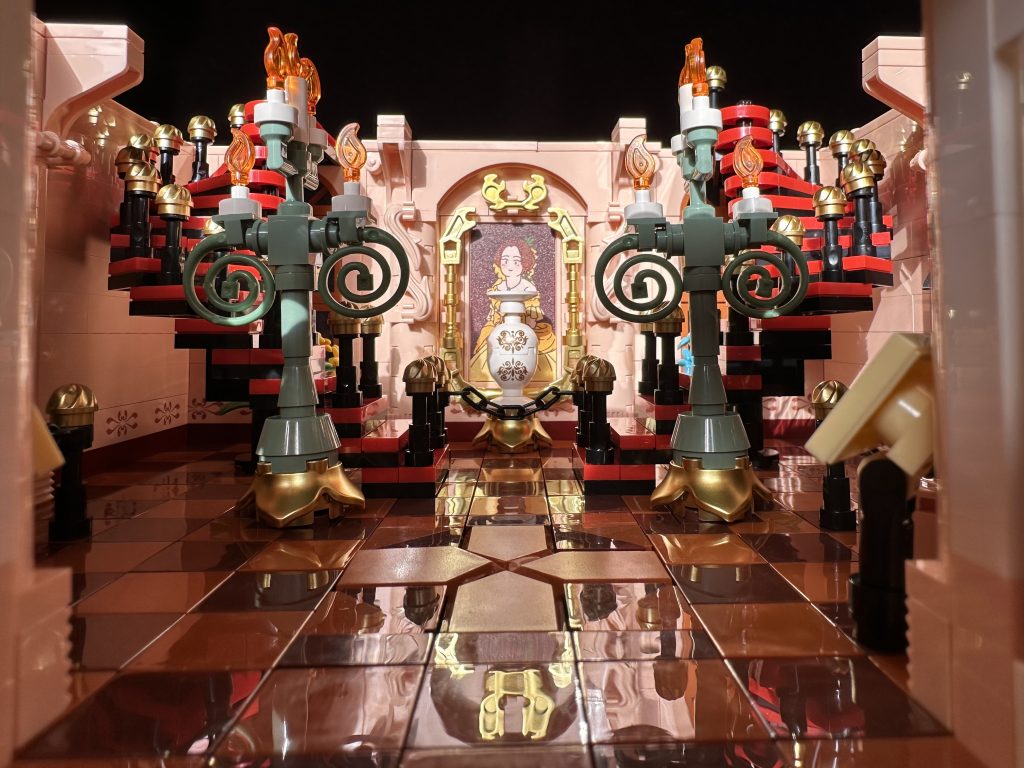
Entering through the revolving door, you arrive in a lavish lobby. The space features three framed paintings, each flanked by sculptural elements and vases. The design choice is bold, but placing sculptures directly in front of the artwork makes the space feel slightly cluttered. Two elegant spiral staircases with black and gold railings rise from the lobby, softened by nearby potted plants. While the space is visually rich, the lack of studs makes it difficult to place minifigures securely. Two information plaques are positioned near the entrance, though their purpose isn’t entirely clear.
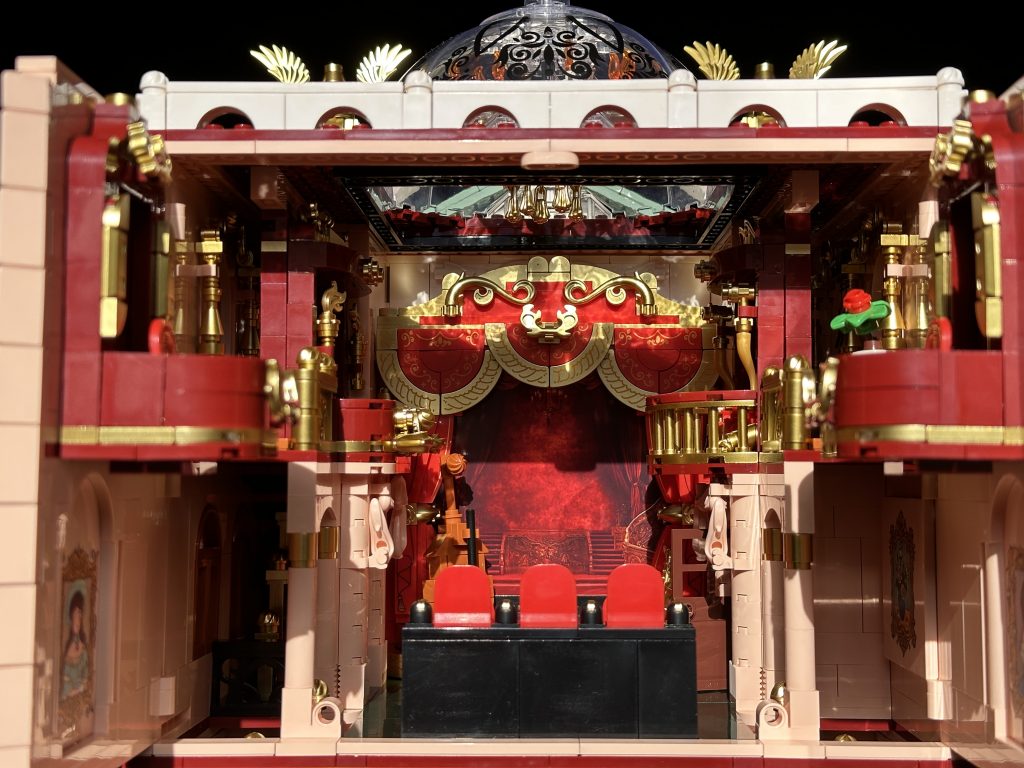
Ascending the stairs brings you to the main performance hall. With a dramatic red, black, and gold color palette, it seats nine minifigures. The stage is framed by open curtains and flanked by printed detailing. A double-sided printed backdrop card allows builders to switch between a bright garden scene or a moody red backdrop—perfect for re-creating different performance moods. Behind the stage, a small backstage area includes costume accessories neatly stored behind the curtain.
Continuing through the hall, ornate walls lead to a staircase and upper-level balconies, which act as VIP seating. A corridor behind these private boxes includes more gold detailing and printed panels, along with a ladder leading to the roof. The ladder, however, doesn’t connect to any hatch or doorway, making it more decorative than functional.
The upper-level areas maintain the visual richness of the rest of the set, but the abundance of gold detailing at times feels a bit excessive. A more restrained use of color—perhaps integrating more tan or medium nougat tones—might create a better visual balance throughout the build.
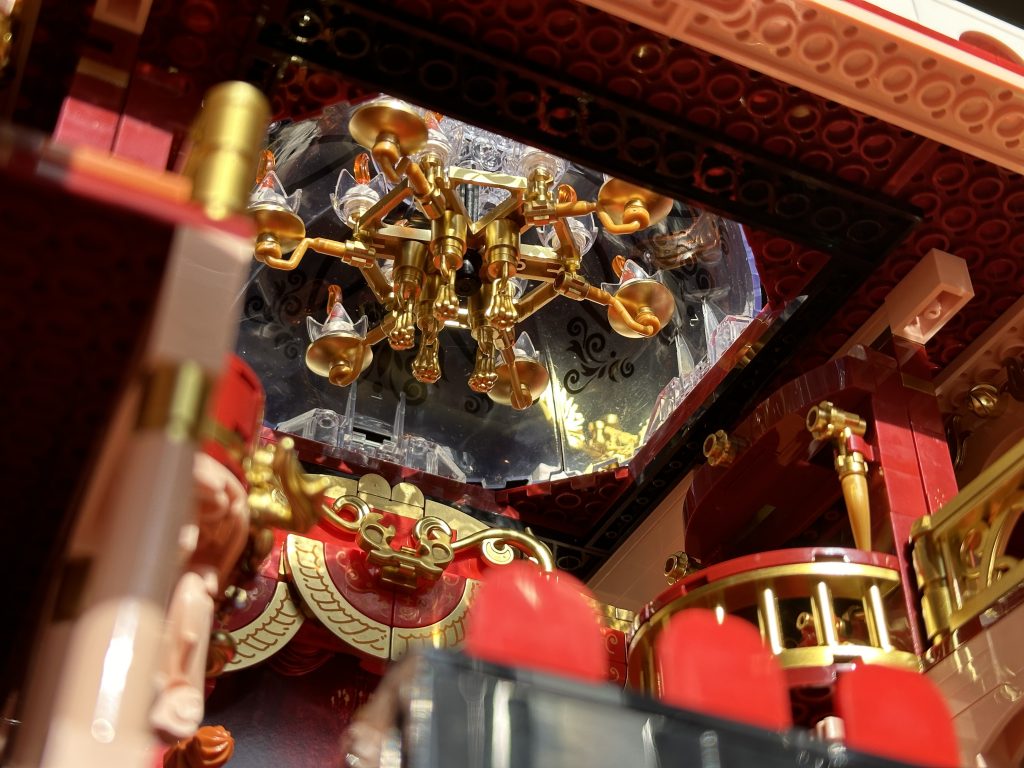
The roof is capped with a domed cupola made from four printed transparent panels, topped off with a massive golden chandelier. The chandelier is highly detailed but somewhat hidden when the set is opened from the back, which lessens its visual impact. Lowering it slightly might help highlight its design better.
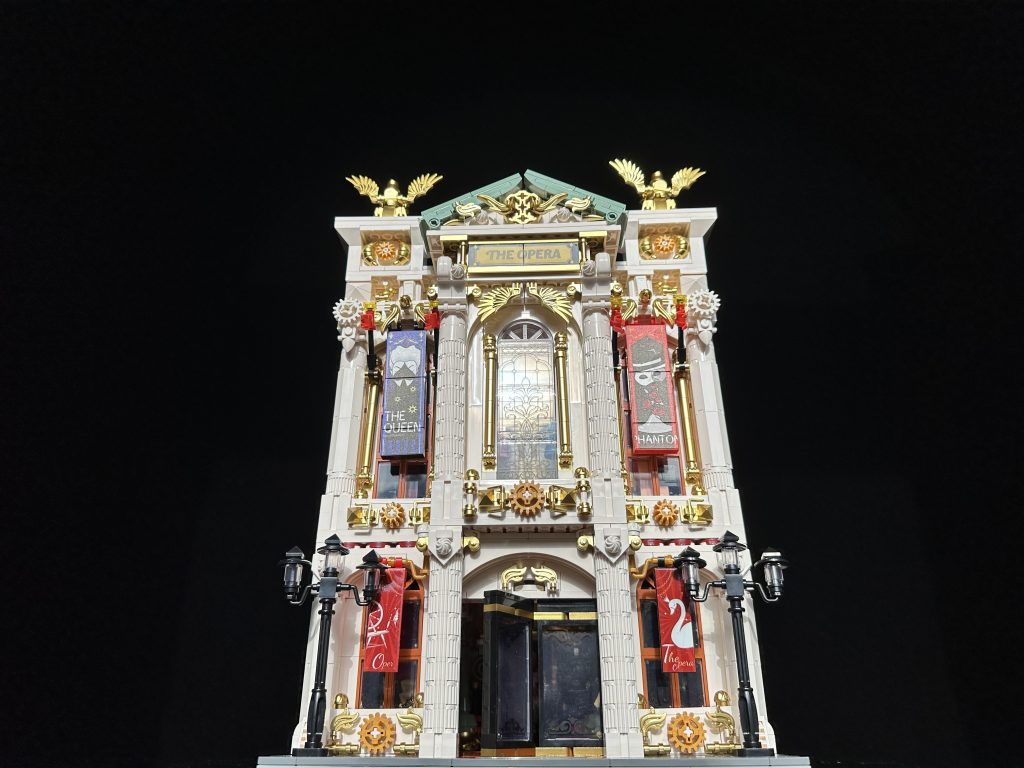
The set retails for approximately $190 USD and includes 3,518 pieces and five minifigures. It comes with two instruction manuals that are generally clear and easy to follow. The building process follows standard modular techniques—stacking up walls and sections floor by floor. One standout difference was how the upper floor’s walls are built separately and then attached to the floor slab afterward. While it’s a creative approach, it results in slightly less stable connections than a more traditional build.
A few small inconsistencies cropped up along the way. Some printed elements came pre-assembled on bricks, which was initially confusing when those bricks were needed elsewhere in the build. Additionally, some parts weren’t clearly marked in the instructions, like the backstage elements or the seating components.
The build took around six hours to complete. Though not overly technical, the build was repetitive at times, and by the end, it left my fingers surprisingly sore. Despite this, the final result is impressive. The set is undeniably a statement piece and would stand out in any modular city layout.
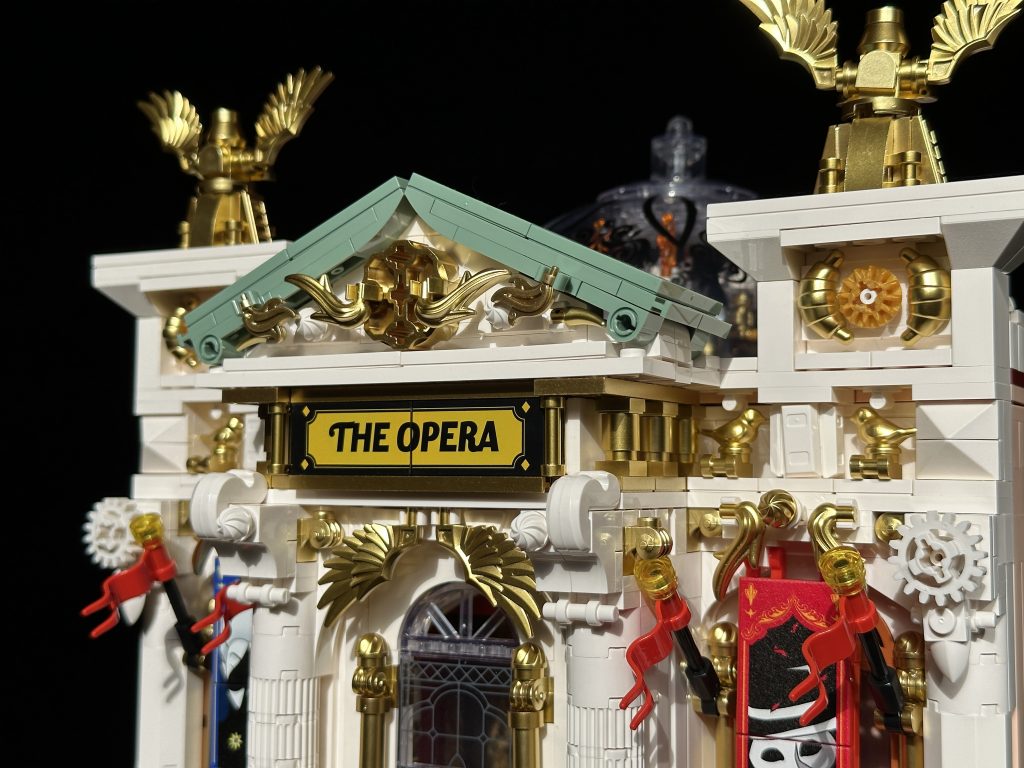
The façade is beautifully executed and sets a high bar for visual design. While the overall gold-heavy detailing might benefit from some simplification, The Opera succeeds in capturing the opulence and elegance associated with its real-world inspiration.
For those considering adding this set to their collection, a 15% discount is currently available via an Amazon US affiliate link. This is a striking set that blends classical inspiration with modular creativity—and it’s certainly worth a closer look for fans of architectural builds.

